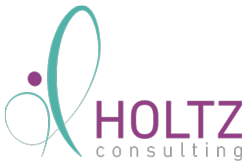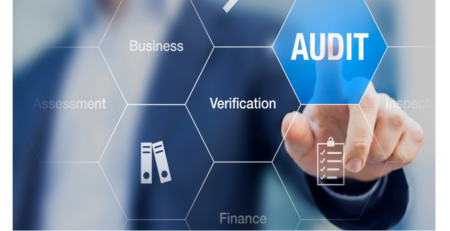Corruption at the Enterprise!
Ensure that on your business, there is no stain, Stamp out abuse for private gain!
To stop corruption destroying faith and trust, install efficient business processes; they are a must!
Corruption at work can be a serious issue; it has the potential to damage the reputation as well as the finances of a business. Corruption can apply to both internal and external business interactions and learning how to identify corruption, a broad term describing misconduct at work, is a key skill. Corruption in all its forms is damaging and unfair but if preventative measures are taken or the situation is addressed in time, it may never become an issue.
By ensuring there are anti-corruption policies well established as part of the company culture and operations enables everyone to know exactly what needs to be done in a situation of dishonesty. By having policy documentation clearly defined, it guarantees that there is no opportunity for corruptive activities within company pursuits.
By classifying how a process should function and who is responsible for each task, it makes sure that all activities are tracked and measured, management receives a clear picture of what is taking place and what is not working and why it is not working. In essence, such effective business process documents, can go far in the prevention of corruption in the workplace.

The negative effects of corruption in the workplace
Firstly, when corruptive activities get out of hand, the result is monetary loss for the business (Adjigogovic, 2021)1, often leading to irreparable damage to the company and fewer business opportunities. When finances are affected, this can lead to a decrease in employee productivity which then results in a further loss in profits for the company (PBS, 2020)2.
Further, when trust is lost in the workplace, whether it is among management or regular employees, staff morale is often severely affected. Employees lose interest in their jobs and fail to see the purpose of continuing. They may feel that honesty does not pay and that their loyalty is worth neither time nor effort.
In addition to these major effects, a company’s reputation can be seriously damaged. When this happens, business clientele diminishes, and the recruitment of skilled employees is impacted. Customers and potential employees perceive the business and its operations differently, noticing the unmistakable signs of a dysfunctional company culture (Adjigogovic, 2021)1. Thus, these are all signs that the firm is not an ideal place to do business with or indeed to work with.
To summarise, this quote from the United Nations Office on Drugs and Crime (UNODC) clarifies the impact that corruption has on business and society as a whole:
“Private corruption affects the entire supply chain, as it distorts markets, undermines competition, and increases costs to firms. It prevents a fair and efficient private sector, reduces the quality of products and services, and leads to missed business opportunities” (UNODC, 2013)3.

Warning signs that corruption is taking place
Undoubtedly, one needs to know what to look for when attempting to prevent corruption or eliminate misconduct that is already present in the workplace. There are red flags that should alert one that something untoward is happening, something that is outside the usual activities of the business.
One thing that could ring alarm bells may be unusual or unnecessary purchases that cannot be accounted for (Adjigogovic, 2021)1. Who authorised these transactions? Can they be explained? Is the explanation reasonable? These questions, and maybe more, need to be addressed to remove any doubt as to the validity of such purchases.
Another example of a potential corruptive activity is if an expense report shows up inaccurate or incomplete details (Adjigogovic, 2021)1. Why is there information missing? Why is the report showing errors that corrupt vital information? Who filled in the report? Can the mistake be explained? Again, such questions need to be considered in order for an honest explanation to be reached.
Additionally, if it arises that an unqualified client is doing business with the company, this could be a warning sign (Adjigogovic, 2021)1. How was such an alliance allowed to happen? Why was there not a more thorough background check on the client? Who authorised the collaboration? Can any of this occurrence be justified? The answers to questions such as these must be found before corruption is ruled out.
These are just some situations that merits a closer look at what is taking place within a business and its daily activities. An investigation into any strange incident that seems out of place should detect if any misconduct is taking place (Adjigogovic, 2021)1.
Alternatively, preventative measures could be established in the form of efficient business process documentation which tracks all processes from beginning to end and reveals unexpected occurrences along the way.
“Consider this…….
Business process documents place boundaries, list expected results, detail inputs, determine who is involved, reduce confusion, and walk employees through a process (Slack, 2021)4.”

How process documentation can potentially reveal corruptive practices
Producing process documents for a business can be a tiresome task but they are undoubtedly worth all the time and effort. A business process that is detailed from start to finish, when effective, can also expose wrongdoings or anything that is not expected as being essential to the process.
Firstly, a company’s policies should reflect the ethical stance of the business. This means the anti-corruption concept should be noticeable throughout business activities and the process documentation they involve. Aversion to corruption should not be isolated in one policy but rather embedded in all policies and in every business process. It is a policy that entails constant observance and interaction of all those involved in a process (Adjigogovic, 2021)1.
it is vital that processes involve systems that regularly review financial records and business transactions within daily activities. Part of each process should require the flagging of any misconduct or unexplained activity along the way (Adjigogovic, 2021)1.
Efficient process documents would flag irregular company transactions, ensure every expenditure is accounted for, verify that expenses align with the budget and reveal other inconsistencies.
Such documentation would allow for consistent checks by designated employees as part of any process taking place (Adjigogovic, 2021)1.
“Consider this…….
Business process documents place boundaries, list expected results, detail inputs, determine who is involved, reduce confusion, and walk employees through a process (Slack, 2021)4.”

The value of effective business process documents towards stamping out corruption in business
For a business to run honestly and efficiently, there is no alternative but to have comprehensive well-documented processes in place. Such processes promote progress and establish the ethical stance of the company. By adhering to process documents while constantly tracking business activities, points of corruption can be discovered and dealt with (Ross, 2016)5.
Transparency needs to be provided at every step of the process, so signs of malpractice become noticeable at transaction level or possibly before. Such clarity throughout the execution of business activities allows for effective monitoring of the process and the reporting of corruption practices and process violations (Ross, 2016)4.
The United Nations Global Compact (2011)6 suggests that companies use its management model in fighting corruption in business. Firms are urged to regularly improve their management processes and to view these actions as parts of a movement for continual development. The model directs businesses through a process of committing themselves, assessing activities, defining what is needed, implementing activities, measuring them, and then communicating a viable scheme based on the model’s standards. The goal here is not only advancement of business but also, by careful observance throughout a process, to eliminate corruption within company practices.
When company leaders commit to the global compact principles, they take action to fulfil the goals of their businesses ethically and transparently. By detailing this action on process documentation, a business is stating from the beginning that processes are to be followed through ethically and clearly.
By allowing for pre-assessment before and evaluation throughout a process, possible risks and inconsistencies appear. Potential impacts of any wrongdoing are also easier to measure when the process is constantly being monitored. After careful pre-assessment of a process takes place, goals and strategies can be defined, all the while accounting for the monitoring of misconduct.
When it is time to implement the defined strategies and policies, a process can then begin to materialise. The activities and aims of every step of the process need to be carefully monitored with impacts and goals continually measured.
Of course, details of progress as well as warnings of any untoward activities must be communicated to those involved in each process to allow for trust among all stakeholders and complete transparency in all business actions (Slack, 2021)4.
“Consider this…….
Business process documents place boundaries, list expected results, detail inputs, determine who is involved, reduce confusion, and walk employees through a process (Slack, 2021)4.”
References
- Adjigogovic, E (2021) ’10 Effective Ways to Prevent Corruption in the Workplace’ in CareerAddict 10 Effective Ways to Prevent Corruption in the Workplace (careeraddict.com)
- Peninsula Business Services Limited (2020)
https://www.peninsulagrouplimited.com/topic/business-advice/bribery-corruption/
- United Nations Office on Drugs and Crime, UNODC, (2013)
- Slack (2021) ‘What is process documentation and why do I need it?’
https://slack.com/intl/en-gb/blog/collaboration/process-documentation
- Ross, R. E (2016), ‘The Value of Business Process Management to Anti-Corruption Programs’. Anti-Corruption & Governance Center. Center for International Private Enterprise, CIPE
- UN Global Compact Office (2011),
https://www.unglobalcompact.org/what-is-gc/our-work/governance/anti-corruption





